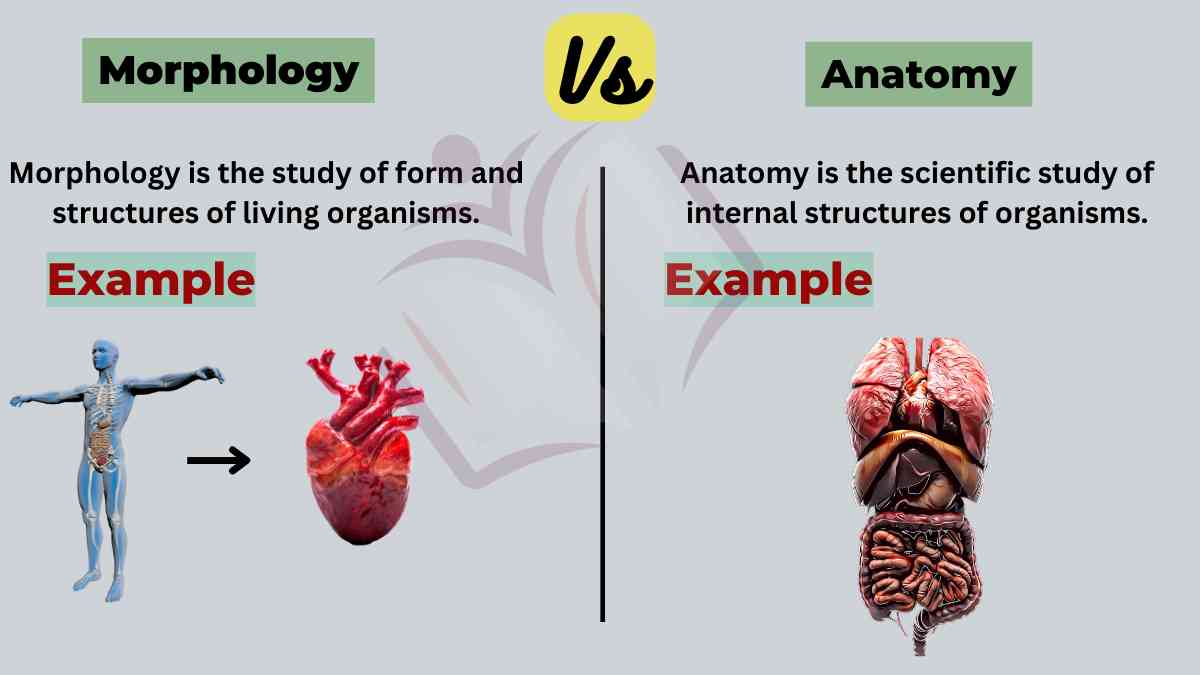The basic difference between morphology and anatomy is that morphology refers to the study of the form and structure of organisms, While anatomy specifically focuses on the study of the internal structure and organization of organisms.

What is Morphology?
The branch of science that deals with the study of the form and structures of living organisms is called morphology. Morphology encompasses the investigation and analysis of the physical characteristics, internal organization, and external appearance of living organisms.
These studies help in understanding the diverse range of biological structures found in different species and provide insights into their functions and evolutionary adaptations. Morphologists classify and categorize various features of living organisms, including organs, tissues, cells, and even subcellular structures.
They identify and describe the structural components, such as bones, muscles, organs, and their arrangement within an organism’s body.
What is Anatomy?
Anatomy is the scientific study of the internal structures of organisms, including humans and other animals. It involves the examination and understanding of the arrangement, organization, and relationship of various tissues, organs, and systems within the body.
In anatomy, researchers analyze the physical structures of living organisms, ranging from microscopic cells to complex organ systems, in order to gain insights into their form, function, and interconnections. The study of anatomy provides a foundation for understanding how the body is organized and how its different components work together to maintain health and perform various physiological functions.
Morphology vs Anatomy
The key difference between morphology and anatomy is given below:
| Category | Morphology | Anatomy |
| Definition | The study of the form and structure of organisms and their parts. | Observes and examine the arrangement, relationships, and functions of organs. |
| Scope | Focuses on the external and internal structure of organisms. | Concentrates on the internal structure and arrangement of organs. |
| Level of study | Examines structures at various levels, including cells, tissues, organs, and organisms. | Primarily concerned with the structures of organs and organ systems. |
| Observation | Observes and analyzes the shape, size, color, texture, and other physical characteristics of organisms and their parts. | Observes and examines the arrangement, relationships, and functions of organs. |
| Application | Used to classify organisms, study evolutionary relationships, and understand adaptations. | Applied in medical and biological fields to diagnose diseases, develop surgical procedures, and investigate body functions. |
| Examples | Studying the different shapes of bird beaks or the structure of insect wings. | Analyzing the anatomy of the human heart or the skeletal system of mammals. |
